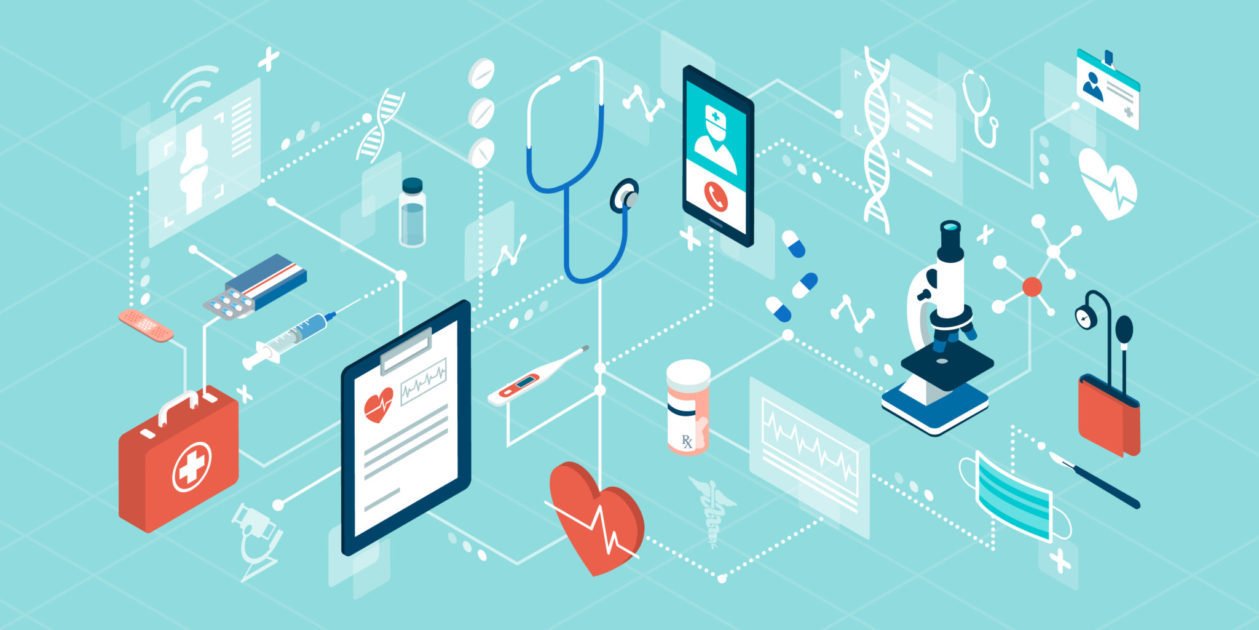Doctors worldwide face overcrowded medical facilities, floods of patients and, for many, the most difficult challenge of their lifetimes. With so few resources available to treat an increasing number of COVID-19 cases, the health care system is being forced to prioritize who receives care, while transitioning entire practices to virtual methods for the first time. In response to this overwhelming volume, the health care system is witnessing fast-tracked innovations in digital health and telemedicine, leading to a new landscape built on streamlining efficiencies, reducing costs and delivering care with new technological models. As virtual care and telehealth become the new staples of modern treatment, the medical industry is experiencing a transformation beneficial to doctors and patients alike.
Telehealth gives patients a digital portal into the health care system, whether through a digital screening tool or a video call with a physician. Despite its convenience, affordability and growing clinical breadth, telehealth experienced low utilization rates among health insurers and vendors up until these past few months. According to a national survey conducted by Mercer Health, health care companies with over 500 employees reported that 71 percent of their workforce had access to telemedicine, but struggled incorporating the services into daily utilization. A brief published by Peterson-Kaiser Health System Tracker in 2018 also indicated telemedicine had between 1 to 3 percent utilization among a broad range of age groups.

The coronavirus epidemic has reversed this trend. With doctors and medical resources spread thin, hospitals and providers are increasingly turning to virtual options. Teladoc and Amwell have reported tremendous increases in volume. Teladoc is averaging 15,000 patient visits a day in the U.S., 50 percent higher than in February. Amwell has seen a 350 percent increase from the normal expected volume of calls this time of year. Digital health companies, like Clearstep, are also seeing increasing traffic. Currently, Clearstep is processing approximately 10,000 symptom checks per day, many times higher than months prior.
Online symptom checkers are one digital health service the medical industry is turning to during this pandemic. Before meeting face-to-face with doctors, users engage with AI-driven chatbots to understand their best options for care. These digital dialogs feature a number of multiple choice questions that gather clinically relevant information and provide the best next steps for care (whether that’s urgent care, a trip to the ER or a virtual appointment with a specialist). In a time when medical facilities are overcrowded and hospital beds are in high-demand, digital front-door solutions help to ensure that the vast majority of people stay home and that those who need care go to the right places at the right times. Our physician advisors working in ICUs in New York City have explained to us that reducing even 10 to 20 percent of patient volume would significantly help the currently overloaded health system.
While many physicians are taking patients via virtual visits for the first time, even more consumers are accessing telemedicine appointments. Decision support companies like Clearstep are serving as portals to help route individuals to the right points of care. So far, we have integrated with 28 hospitals in Florida and Connecticut to help screen for COVID-19 remotely. Physicians and patients across the country are recognizing the convenience of digital health. While large numbers were introduced to the concept out of necessity borne in the climate of coronavirus, many are likely to continue using this more convenient method of accessing care. Telemedicine utilization will likely settle down to a new normal in the post-COVID-19 era.

While the coronavirus epidemic has brought challenges and hardship to the medical community, it has also presented new opportunities for innovation. As doctors and patients increasingly turn to telehealth, seamless, user-centric experiences will become the new normal—much like platforms such as Amazon, Expedia and Uber. Health care consumers will remain inclined to adopt more convenient, price-transparent and virtual modes of care. Digital front-door solutions will help ensure patients have clear visibility of their options for the right level of care, ensuring they are enabled to direct themselves to the best next steps for treatment.
Adeel Malik and Bilal Naved are two of the cofounders of Clearstep Health—a digital health company providing patients with virtual resources and care.






